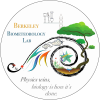Reports
Contents
| Title: | West Pond - NDVI (SRS, Planet) | ||||||||||||||||||||||
| Date: | 2017-06-06 - 2021-04-26 | ||||||||||||||||||||||
| Data File: | WP_NDVI.csv | ||||||||||||||||||||||
| Refers to: | WP,1066703780,2046503378 | ||||||||||||||||||||||
|
Various sensors measuring NDVI have been installed across the Delta sites over the last several years. At some sites, the SRS sensors from Decagon/METER have been drifting low, so I wanted to compare them with other NDVI measurements.
For some sites with I also compared GCC with the various NDVI values to see how much GCC values varied year over year. Photos were taken by a variety of cameras: Netcam Stardot cameras (the official camera of the Phenocam Network®), Canon point-and-shoot cameras with custom firmware, or a Raspberry Pi camera. I used Joe's datafetch tool to calculate daily average mid-day values of NDVI and GCC from the various sensors. Mid-day values included data from 11:00 to 13:00, 5 values a day. I despiked the data in Excel.
See reports for other Delta sites here: East Pond / Sherman Wetland Temp Tower (both sites had same set of SRS sensors) Twitchell Alfalfa / Sherman Barn (both sites had same set of SRS sensors) Â
ÂFigure 1. West Pond NDVI timeseries. SRS has an NDVI values consistently 0.2-0.3 lower than PL and broadband NDVI. PL NDVI has higher seasonal maxes than broadband NDVI. Broadband NDVI has a lot of noise in the winter.  Figure 2. Individual bands of SRS sensors. No obvious decay.  Figure 3. Red reflectance from SRS and PL data. SRS reflectance is about 0.04-0.05 higher than PL reflectance. Seasonality doesn't match: SRS seasonal minimum is in June, whereas PL seasonal minimum is in September. Maybe this is an effect of the pixels included in the PL data.  Figure 4. NIR reflectance from SRS and PL data. Although reflectance values are in the same range, seasonality doesn't match in 2018. In 2018, PL reflectances started increasing earlier and reached a seasonal peak earlier in early August, whereas SRS reflectance peaked in late September. 2019 seasonality timing matches better than in 2018. Â
Figure 5. Linear regression of SRS NDVI against PL and broadband NDVI. Fits are similar with R2 of 0.85 and 0.91. Â Figure 6. West Pond GCC and SRS data. SRS and GCC annual patterns seem reasonable. In 2017 and 2018, the GCC peaks around July and NDVI peaks around 2 months later, but in 2020 they both peak in August. In all 3 years, NDVI starts increasing in the spring before GCC. Â
Figure 7. Linear regression of SRS NDVI data with GCC_13-15 (average GCC from 13:00-15:00). Best fit is with SRS data R2=0.81. R2 ranges from 0.6  Figure 8. Linear regression of SRS NDVI data with GCC_11-13 (average GCC from 11:00-13:00). Best fit is with PL and SRS data (R2~0.82). |
|||||||||||||||||||||||
| |

